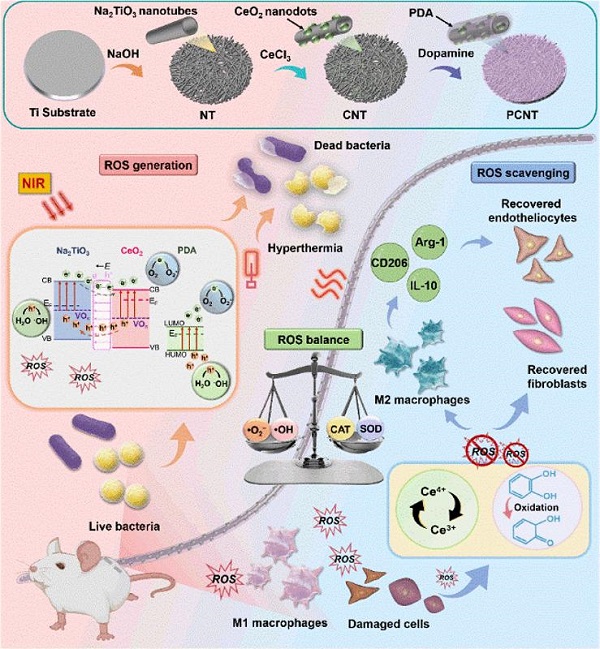XJTU achieves dual catalytic mode coatings application progress

Preparation process of the PDA@CeO2-Na2TiO3 coating on Ti surfaces.
Researchers from the State Key Laboratory for Mechanical Behavior of Materials at Xi'an Jiaotong University (XJTU) recently constructed a composite coating on the surface of Titanium (Ti) implants. This coating consists of Na₂TiO₃ nanotubes, CeO₂ nanodots, and polydopamine (PDA) and operates via a dual-catalysis mode to manipulate ROS generation and scavenging, achieving antibacterial effects and promoting tissue regeneration. The heterojunction formed between Na₂TiO₃ and CeO₂, along with oxygen vacancies (VOs) in their lattices, facilitates electron-hole pair separation.
This work proposes a surface microstructure design strategy for implants with a dual-catalysis mode. By manipulating ROS generation and scavenging, it achieves infection clearance, inflammation regulation, and enhanced biointegration of Ti implants in diabetic microenvironments.
The study, A Dual-Catalysis Mode for ROS Regulation to Accelerate Biointegration of Implants in Infected Diabetic Wounds, was published in the prestigious journal Advanced Functional Materials.
Diabetes is a chronic metabolic disease characterized by hyperglycemia, excessive reactive oxygen species (ROS), and accumulation of advanced glycation end products (AGEs). These factors often lead to persistent inflammation, recurrent infections, and delayed tissue regeneration during wound healing.
Ti alloys, known for their high strength, corrosion resistance, and good biocompatibility, are widely used in hard tissue repair. However, the bioinert nature of Ti alloys prevents them from regulating inflammation or resisting bacterial adhesion, resulting in high implant failure rates in diabetic patients. This issue is particularly prominent in percutaneous Ti implants.

